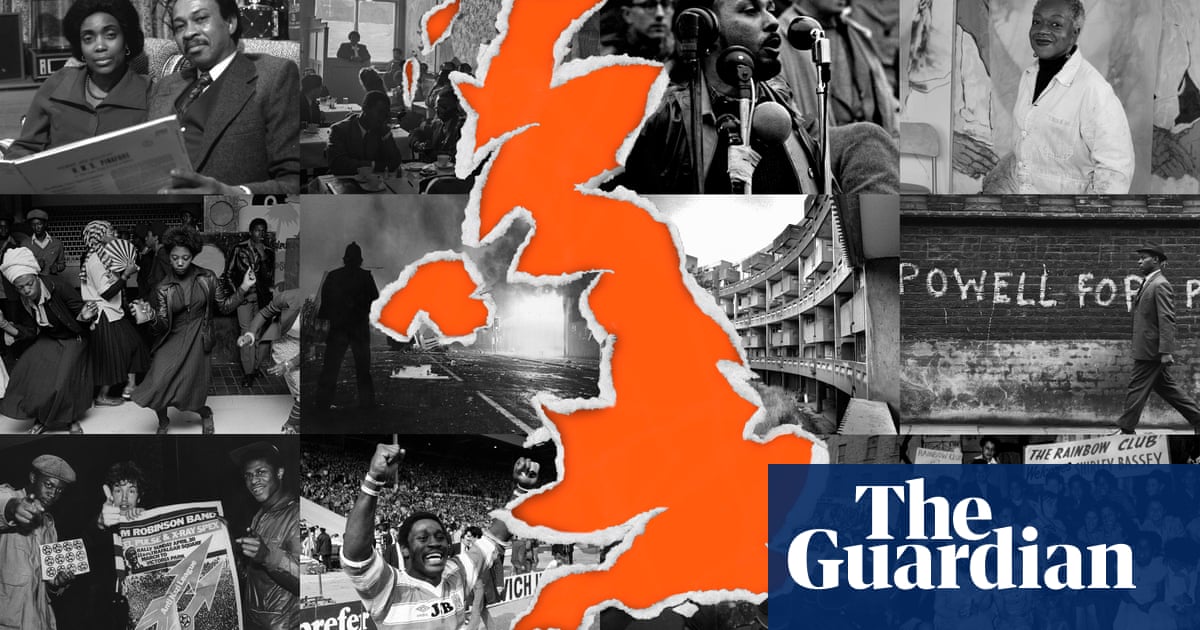Donald Trump’s escalating trade war has plunged global financial markets into the steepest rout since the spread of the Covid pandemic five years ago.
Drawing parallels with the 1929 Wall Street crash and the ensuing 1930s Great Depression, the US president’s “liberation day” tariff plan has led to warnings of a global recession from leading economists.
More than $5tn (£4tn) has been wiped off the value of global stock markets since Trump’s Rose Garden address on Wednesday evening last week, with investors braced for further volatility as Washington appears unwilling to back down.
On Wall Street, the S&P 500, one of the benchmark US stock indices, is close to entering bear market territory – when an index has dropped more than 20% from its most recent peak – in one of the biggest stock market slumps in history.
Here is how the current sell-off compares with some of history’s biggest crises.
1929 Wall Street crash
The biggest setback to the global economy of the modern industrial age. The Wall Street Crash of 1929 came after a frenzy of speculative share-buying, creating a bubble in the market, with the subsequent collapse triggering the Great Depression of the 1930s and the economic climate that led to the second world war.
The Dow Jones industrial average fell by 11% on “Black Thursday,” 24 October, which was followed by a 13% fall on the Monday and an 11% tumble a day later. The downward spiral would take until June 1932 to bottom out, by which point the companies on the New York stock exchange had lost 90% of their value.
1987 ‘Black Monday’
The first big global financial crash of the modern era, brought about, again, by a speculative bubble in the boom and bust 1980s. The Dow Jones recorded its biggest-ever daily fall, with a 22% rout on 19 October.
The London market also came crashing down; in a collapse made worse by the closure of the stock exchange on the Friday amid the travel chaos caused by the Great Storm of 1987 – infamously glossed over the previous evening by the BBC weather forecaster Michael Fish.
With City traders struggling to return to their desks, and with computer-automated trading adding to the rout, the FTSE 100 fell by 10.8% on the Monday, with a further 12.2% plunge the following day.
2000 dotcom crash and 9/11
The hysteria of the 1990s boom in stock market listings by fast-growth internet companies drove the FTSE 100 to a peak of 6,930.2 on 30 December 1999 – a record that would stand for the next 15 years.
Early in the new millennium, the dotcom bubble burst in March 2000, and the 9/11 terrorist attacks in 2001 crashed the index back down to a trough of 3,287 by the time coalition forces were gathering to prepare for the invasion of Iraq in 2003.
Investors have drawn parallels with the market exuberance at the end of the last century by highlighting the meteoric rise of the so-called “magnificent seven” group of US tech stocks, and subsequent crash in valuations over recent weeks.
2008 financial crisis
Lehman Brothers filed for bankruptcy on 15 September 2008, in the watershed moment of the worst financial crisis of the postwar age. Global markets had been in deep trouble for some time as the credit crunch raged; with its roots in the US sub-prime home loan market.
On the day of Lehman’s collapse, the FTSE 100 fell by a relatively limited 4%, but would go on to lose almost a third of its value in 2008 as a result of the global financial crisis.
The bank runs, company failures and fears of the international recession it would trigger led to some of the steepest daily losses in trading history, with an almost 9% rout on 10 October marking the height of the chaos.
2016 Brexit vote
Britain’s shock vote to leave the EU sent the pound tumbling to a 31-year low and erased more than $2tn (£1.57tn) of value from global financial markets, with the heaviest losses on the FTSE 100 and European trading hubs.
The FTSE 100 collapsed by 8% within the first minutes of opening; but recovered some ground after Mark Carney, the then governor of the Bank of England, promised it would not hesitate to take action to stabilise markets and the economy. The FTSE 100 ended the day down 3.2%.
2020 Covid pandemic
The forced shutdown of the global economy during the health emergency of the Covid pandemic triggered panic in financial markets and the deepest recession since at least the 1930s Great Depression.
Major landmarks in the global markets toppled in a matter of hours and days, including more than eight years of gains on the FTSE 100 being wiped out in barely a month, while global stocks had their best and worst sessions in a decade on consecutive days.
The FTSE 100 recorded its biggest daily fall since Black Monday, of almost 11%, while the Dow fell by about 13% on 16 March. However, rapid intervention from central banks and governments helped instil a dramatic turnaround.

.png) 1 week ago
13
1 week ago
13













































